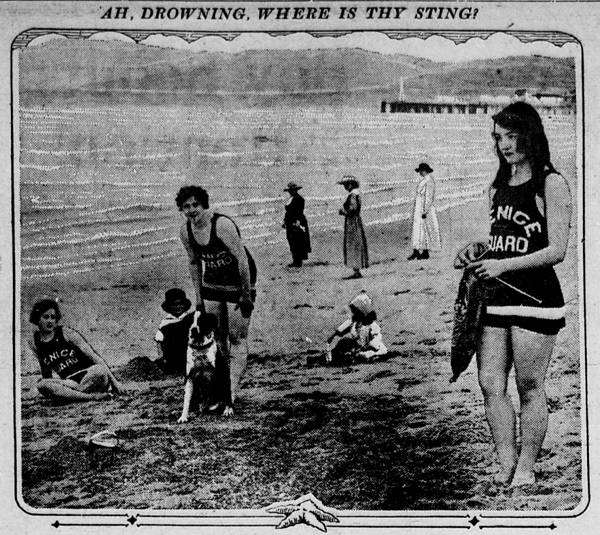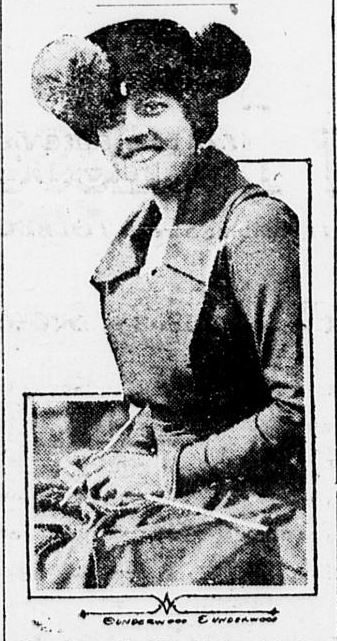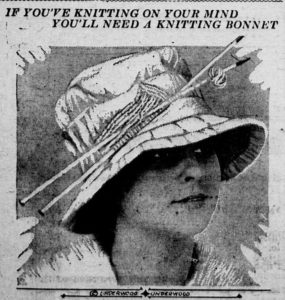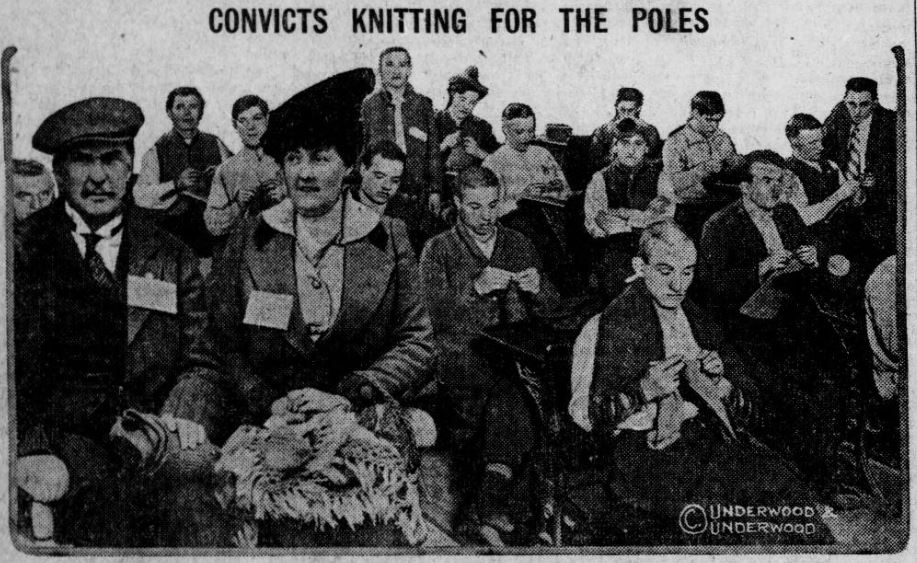Knitting Women of World War I

Right now we’re in the middle of the World War I centenary. While the world’s men were off fighting one hundred years ago, women on the home front were helping the war effort in their own way. Knitting was one of the most common forms of help for women to provide, and this activity was so popular that newspapers throughout the state and country would publish photographs, patterns, meet-ups and information on how to get supplies.

Newspapers frequently reported on the fad of women carrying their knitting along everywhere. Part of this interest was in where women were knitting, as in the articles “Symphony Concerts, fashionable musicales, and at almost every other assemblage” or“knitting at the horse show,” but there was also great interest in the items women carried with them. Knitting bags were increasingly popular, as were bracelets, aprons and knitting skirts with “large pockets on the hips.”
Knitting was influencing fashion at this time as well. In addition to the knitting skirts mentioned above, women wore hats that matched their knitting bags or matched their bags to their clothes. One example from the Perrysburg Journal shows a hat that was made to look like a piece of knitting. Porcupine quills look likeknitting needles, and a small swatch of knitting and a knitting ball are attached to the quills and hat as well.

Of course, all this fashion was borne out of a real cause women were supporting. The Red Cross called for knitting to be done on behalf ofsoldiers, and supplies were provided for this work. Newspapers at the time were a great way to share information about knitting bees and the sorts of items that were in demand. The November 23, 1917, issue of the Medina Sentinel provides a number of examples of what was happeningat the time, such as the Junior Red Cross making knitted blocks to be compiled into blankets for soldiers.Instructions were given for how to make cuffs for the soldiers, as well as how to process socks before donating.
Another popular theme in articles about this aspectof the domestic war effortwas how much knitting women were doing. TheMedina Sentinelalso reported on thenumbersof items donated, which included “82 pairs of socks, 52 pairs wristlets, 49 sweaters and 17 scarfs.”In an issue published two months earlier, it is mentioned that the Knitting Committee has“reached the two hundred mark in socks” and recommends making “sweaters and wristlets as fast as yarn is furnished, so that the quota of articles may balance up.” A 1918 piece from the Mt. Vernon Democratic Banner talks about an 83-year old woman in Ontario, Canada, whomade 720 pairs of socks over the course of the war!

Whatever your interest or hobby, historic newspapers onOhio Memory and Chronicling America are sure to have information covering it. Try a search and see what you can learn about how your ancestors engaged in your favorite pastime, whether it was purely for fun, or, as with the knitters of World War I, for a greater cause.
Thanks to Bronwyn Benson, quality control assistant for the Ohio Digital Newspaper Program, for this week’s post!



Leave a Reply
You must be logged in to post a comment.